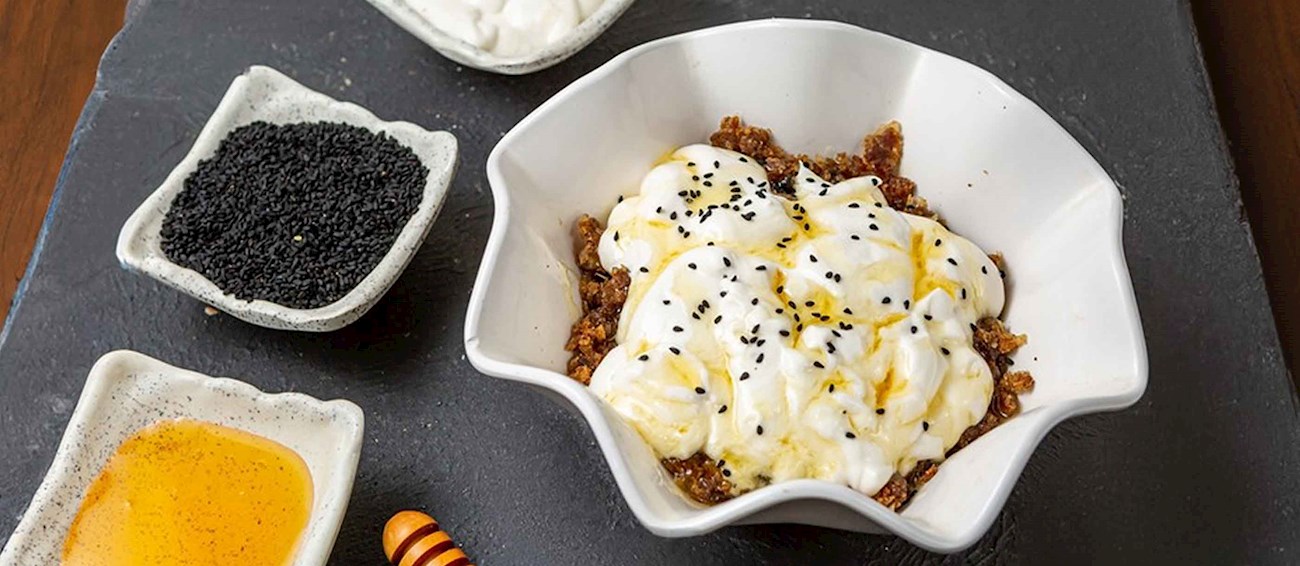Areeka is a traditional dessert that is prepared with a combination of mashed dates and crumbled bread such as khubz, while the additions usually include cream, condensed milk, honey, and spices. This filling dessert can be enjoyed for breakfast or as a light snack, and it is typically drizzled with honey and garnished with slivered almonds.
Interestingly, some variations are topped with grated cheese.
Masoub is a Yemeni dessert that is popular throughout the Arabian peninsula. In its basic form, the dish consists of mashed bananas and bread that are usually enriched with butter, cream, spices, honey, and dates. Masoub is traditionally served on large plates, and it is meant to be enjoyed as a communal meal.
It is often served as a breakfast dish, and usually comes garnished with cream, condensed milk, nuts, or honey.
MAIN INGREDIENTS
Bint al-Sahn, also known as Yemeni honey cake, consists of multiple thin layers of dough brushed with ghee (clarified butter), baked until golden, and then drizzled with honey. The top of the pastry is glazed with an egg wash and topped with nigella seeds.
Bint al-Sahn is known for its flaky, buttery texture and sweet flavor, making it a popular dessert or treat, especially during special occasions and family gatherings in Yemen. It is served with honey, which is considered a sign of wealth and high social status.
MAIN INGREDIENTS
Aseeda or asida is a moist, pasty dough consisting of wheat flour or sorghum, water, yogurt, salt and sunflower oil that is then served with a variety of accompaniments, such as honey, butter, dates or even a savory version with meat stew, depending on regional preferences.
The dish is traditionally eaten without any utensils. Using only one's fingers, aseeda is eaten from one bowl and shared communally. When preparing the dish, one must be careful and stir it continually, so it doesn't develop any lumps. One of the earliest recipes for the dish was written in the 13th century, and today aseeda is eaten either for breakfast, dinner or during the traditional festive ceremonies such as the aqiqah, celebrated by cutting the hair of a baby seven days after its birth.
TasteAtlas food rankings are based on the ratings of the TasteAtlas audience, with a series of mechanisms that recognize real users and that ignore bot, nationalist or local patriotic ratings, and give additional value to the ratings of users that the system recognizes as knowledgeable. TasteAtlas Rankings should not be seen as the final global conclusion about food. Their purpose is to promote excellent local foods, instill pride in traditional dishes, and arouse curiosity about dishes you haven’t tried.



